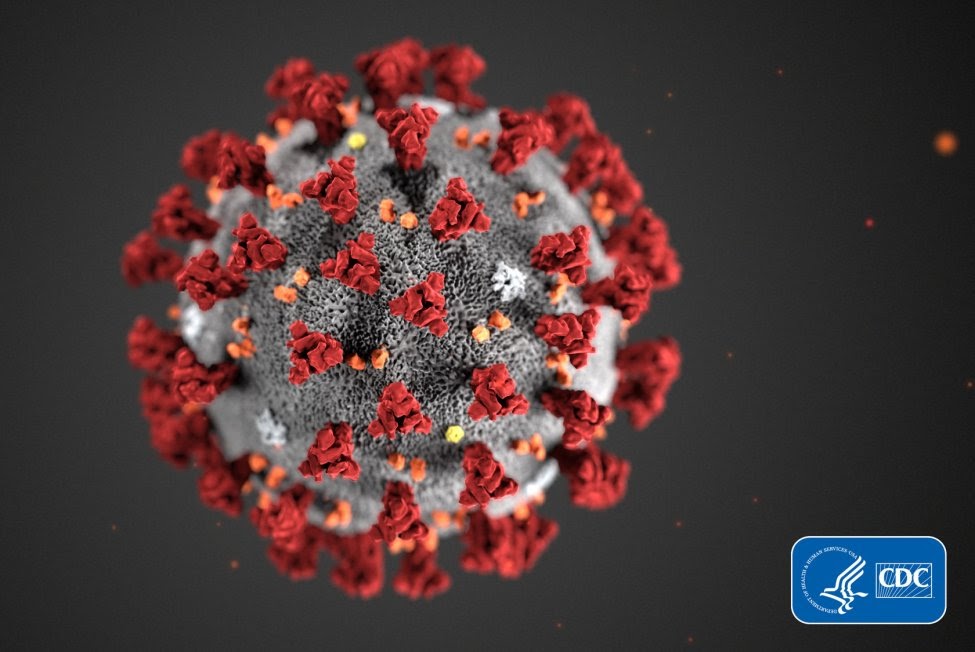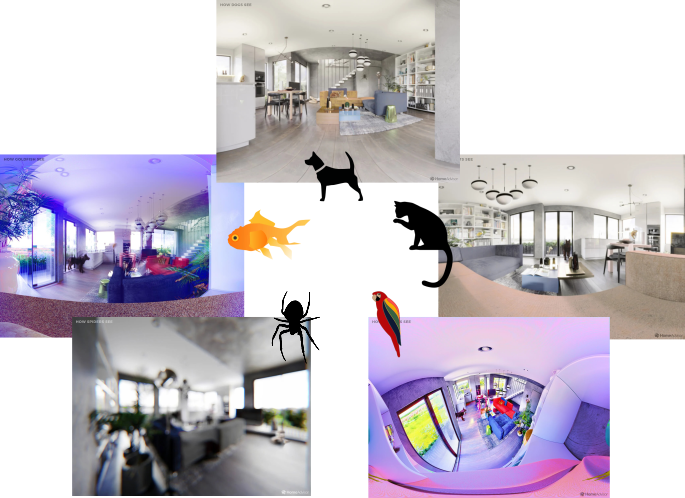| Previous
Page |
PCLinuxOS
Magazine |
PCLinuxOS |
Article List |
Disclaimer |
Next Page |
Short Topix: Your Smartwatch Could Help Detect COVID-19 Earlier |
|
by Paul Arnote (parnote) Commander Montgomery Scott Beamed Up To The ISS ... Sorta  Nearly everyone who has seen Star Trek knows James Doohan, the Canadian-born actor who played Commander Montgomery "Scotty" Scott, the Chief Engineer of the U.S.S. Enterprise. Born in 1920, one of his dying wishes was to have some of his ashes flown into space. James Doohan died in 2005. The attempts to get Doohan's ashes into space were not necessarily an easy task. In April 2007, 1/4 ounce (7g) of Doohan's ashes joined 308 others on a memorial flight into space. The flight was a short four minute suborbital flight into space, where the ashes remained onboard, until a planned return by parachute to Earth. Another attempt was made in August 2008, aboard Falcon 1, in what was supposed to be a low earth orbit. However, that rocket failed two minutes into the mission. Then, in 2008, private astronaut Richard Garriott smuggled aboard the ISS (International Space Station) on a laminated card, and it remains hidden under the floor cladding of the ISS's Columbia module. The presence of Doohan's ashes aboard the ISS remained secret until December 25, 2020, when The Times (London) reported the "event," ending 12 years of secrecy. Previously, only Garriott and Doohan's family had any knowledge of his ashes being aboard the ISS. In the ensuing 12 years, Doohan's ashes have racked up over 1.7 billion miles in space aboard the ISS, orbiting Earth more than 70,000 times. However, this is not the end of the story. In 2012, a small urn containing some of Doohan's ashes was flown into space aboard the SpaceX Falcon 9 rocket, as part of the COTS Demo Flight 2. In the end, Scotty himself was "beamed up" into space ... the final frontier. ICYMI: Some "Interesting" Articles TechRepublic "Passed On" From 2020  I don't include things like this very often, but I had to make an exception. We all know how utterly horrible 2020 was. It was easily the absolute worst year in recent memory. The COVID-19 pandemic, Asian murder hornets arrive in the U.S., whacked out politics, the fires in Australia, the fires in the western U.S., and many other calamities gathered headlines in a year that most of us would like to forget, and hope doesn't get repeated anytime soon. When I read this list, I laughed out loud. It is a list of article ideas that were pitched to TechRepublic that they decided to pass on ... as in, not write about. If they even bring a smile to your face, then great. It had a similar effect on you, as well. We could all use a little levity after enduring the onslaught of calamity after calamity after calamity in 2020. KFC Bucket PC Chicken Warmer. At first, you might think that KFC (Kentucky Fried Chicken) has entered the PC business. But no, they have not. At least, not directly. Instead, Cooler Master has created a PC that also keeps your chicken (or other foods) warm while you game or otherwise use your PC. It sounds a bit weird to me, seeing how heat and electronics usually don't make for a long, stable marriage. Maskfone Mask/Wireless Headphone. OK. Give them props. They were at least thinking about how to solve a problem with all of the mask wearing the pandemic has thrust upon us. But there are two huge problems that crop up. First, the price is a bit steep at $50 (U.S.) for each one. Second, since we should be washing out masks daily, it seems a bit of a hassle to remove all the sensitive and fragile electronics every day before washing the mask fabric. Over 10% of people working from home do so naked. As in, without clothes on. There's no question that the pandemic drastically changed (probably irreversibly) how we work. A LOT more people "worked" from home, by telecomputing. According to a Kaspersky survey, 11% of respondents admitted that they like working sans clothing. Another 36% admit to waking up just five minutes before they have to "be" at work. 23% admit to binge-watching content on Netflix, and 18% admit to playing more video games. Let's just hope that those 11% who like to work naked have their webcams covered! Check out the rest of the list by heading over to TechRepublic to read "the rest of the story." Your Smartwatch Could Help Detect COVID-19 Up To A Week Before You Develop Symptoms  A variety of smartwatches, including those from Apple, FitBit, Garmin and other manufacturers, could help detect persons infected with COVID-19 seven to nine days before they develop symptoms, according to a pair of studies. One study from Mount Sinai medical center found that measuring heart rate variability (HRV) with an Apple smartwatch, while wearers recorded and tracked any possible symptoms (fever or chills, tiredness or weakness, body aches, dry cough, sneezing, runny nose, diarrhea, sore throat, headache, shortness of breath, loss of smell or taste, itchy eyes, or none), found significant changes in HRV up to seven days before the patient started showing symptoms. HRV is a metric used to measure immune system health. HRV values change as inflammation develops in the body, and COVID-19 is a disease with high levels of inflammation. Ironically, researchers also discovered that seven to 14 days after the diagnosis of COVID-19, HRV returned to normal and was statistically no different from those who had not been infected. A second study out of Stanford University (beware: lots of mumbo jumbo technobabble) found that 81% of COVID-19 positive study participants were informed of an irregularity in their HRV up to nine days prior to the onset of symptoms using a variety of smartwatches from multiple sources and special apps to detect and analyze the detected/measured HRV. The two studies have spurred the development of custom COVID-19 wearables that are 90% effective in early detection of the virus. The wearable, called Empatica E4 and utilizing an AI product called CovidDeep, monitors regular skin, heart rate, and blood pressure readings to make its mostly accurate detection. Earlier detection could help save lives, detecting COVID-19 infections long before symptoms appear, and long before viral loads skyrocket. A lower viral load could mean easier, more effective, earlier treatment, and thus a lower mortality rate. Brave First Browser To Support IPFS  The Chromium-based Brave browser may have just set the browser world on fire with its new support of IPFS. Interplanetary File System works sort of like BitTorrent or other peer-to-peer file sharing sites/programs in that instead of downloading one file from one server, users use IPFS to download chunks of a file from multiple nodes on the IPFS server. This can seriously cut down on the amount of time it takes to download a file. An article from Lifehacker explained it like this: Each computer or mobile device--known as "nodes"--temporarily stores a piece of a website's data. So whenever you access a website via IPFS, you're loading the data from other nearby nodes on the network. Users can also access IPFS content via a "public gateway," if they do not wish to act as a local node. The other advantage that IPFS has is that it decentralizes the web, making it much more difficult for censorship to rear its ugly head. With bits of files downloaded from multiple sources, it makes it infinitely more difficult to block files with content that others want to see limited or eliminated. Some of the other benefits of using Brave is that they claim to be the fastest web browser around. This is not only, in part, due to its support of IPFS, but also its superior ad and tracker blocking, along with its built-in ability to also block location reporting. Brave claims to be three times faster than Firefox (the fastest browser of the major browsers) and up to six times faster than Chrome or Safari. Being based on Chromium, you can download and use your favorite Chrome plug-ins and add-ons freely. The Brave browser is available for installation from the PCLinuxOS repository. Don't get the idea that using IPFS will mask what you are downloading. Your ISP can still track what you are downloading, just as they do with the downloading of files from a single URL. To do that, you will need end-to-end encryption, as is often offered with the use of a VPN. But, because of the multi-nodal nature of IPFS, it becomes a lot more difficult to block access to the content you wish to obtain. The aforementioned Lifehacker article does an excellent job explaining IPFS. How Do Animals See The World?  The HomeAdvisor website ran a very interesting article recently, called "How Pets See Your Home." It compared what a human sees to how your pet (or other animal) sees the world. They were able to figure out how each animal sees, by comparing eye structure, the number of rods and cones, eye placement, and a few other variables. Dogs live in a pastel world of shades of blue and yellow (and combinations of them). They possess only 20% to 40% of their human counterpart's visual acuity, but compensate with a 240 degree field of view. Cats color perception is somewhere between that of a dog's on the low end, and humans on the upper end of the scale. Their field of vision is approximately 200 degrees. But where cats really excel is in their low light vision. Parrots, like most birds, have a highly developed sense of vision. They can see UV (humans can't), blue, green and yellow. They can also see approximately 300 degrees, have monocular vision (one eye can view something, while the other wanders around), can adjust their focus very quickly, and have voluntary control of their pupils. Spiders have rather weak eyesight, despite having around eight eyes. Their eyes don't contain cones (the color sensing part of the eye), instead relying on proteins called ospins, which might be sensitive to certain colors, which may help them with mating. Spiders rely more on the little hairs all over their legs to feel their way around, more so than vision. Goldfish can see more colors than humans, with their eyesight extending into the UV range. This should help the goldfish see with more clarity underwater, as well as help the goldfish see where Fido has marked your sofa as part of his territory. Their eyes can see almost 360 degrees (ever wonder where we get the term fisheye lens?), and their eye density is nearly the same as water, which may help compensate for the bending of light in water. It's a fascinating world, made even more fascinating by discovering how different animals see the world. New Course From The Linux Foundation  The Linux Foundation has created a new course, aimed at beginners. It is called "Open Source Management & Strategy." It has seven modules, each with four to five lessons per module. This seven-module course series builds on the accumulated wisdom of many previous training modules on open source best practices, while adding fresh and updated content to explain all of the critical elements of working effectively with open source in your enterprise. The courses are designed to be self-paced, and reasonably high-level, but with enough detail to get new open source practitioners up and running quickly.
Here are the seven lesson modules: Who It's For. This course series is designed to help executives, managers, and software developers understand and articulate the basic concepts for building effective open source practices within their organization. It is also helpful for a leadership audience responsible for setting up effective program management of open source in their organization. Before enrolling, students should have a basic understanding of software development and business concepts. What You'll Learn. In the first module (LFC202), you will learn the basic components of open source and open standards. You will also learn about the differences between open source and closed source software, the reasons for the use of each, and how the combination of standards and open source provides increased value to an organization. The second module (LFC203) discusses the various open source business models and how to develop practical strategies and policies for your organization's chosen model. It also explains the value and importance of an Open Source Program Office (OSPO) as well as how the OSPO helps provide assistance in defining ROI and other open source metrics. In the third module (LFC204), you will learn how to build an effective OSPO and articulate the different types of roles and responsibilities needed to run it successfully. Module 4 (LFC205) talks about the role of continuous integration and testing in a healthy open source project, and how you can apply open source development principles to internal projects within your organization to take best advantage of the value these principles bring. In the fifth module (LFC206) you will learn about the importance of effective open source license compliance and how to build programs and processes to ensure safe and effective consumption of open source in the enterprise. You will also get familiar with the most common open source license types, and their major characteristics, as well as how to choose the most appropriate license for a given situation. Module 6 (LFC207) discusses how to work most effectively with upstream open source projects and how to build sound contribution strategies in organizations to get the maximum benefit from working with project communities. It also describes multiple common upstream project governance models, and explains how these governance practices affect an organization's ability to make effective contributions. Finally, the last module (LFC208) discusses the rationale and value for creating new open source projects as well as the required legal, business and development processes needed to launch new projects. What It Prepares You For. Upon completion of this course series, you should be able to build effective processes and strategies for creating new open source projects from scratch, or from open sourcing previously closed source projects within an organization. The course will cost you $499 (U.S.). It is an online, self-paced course, and registrants have unlimited access to the online course materials for a period of one year to complete the course. |


